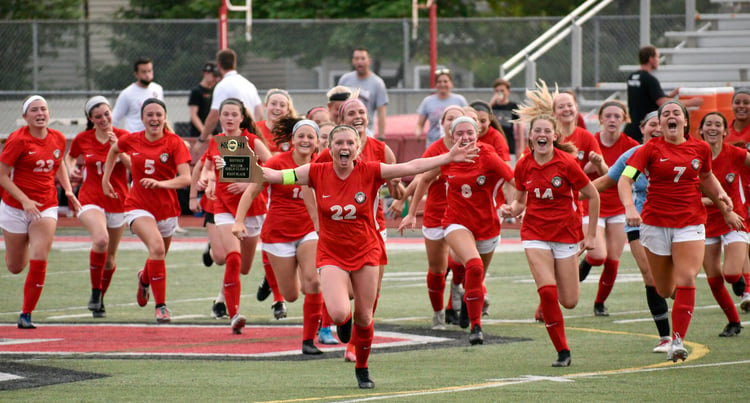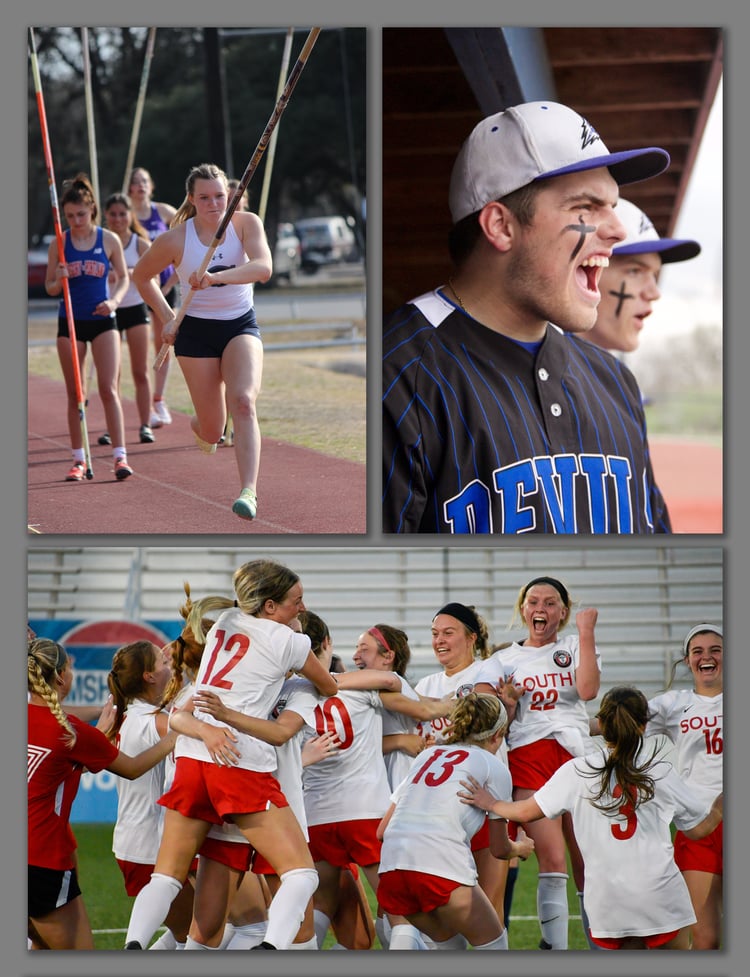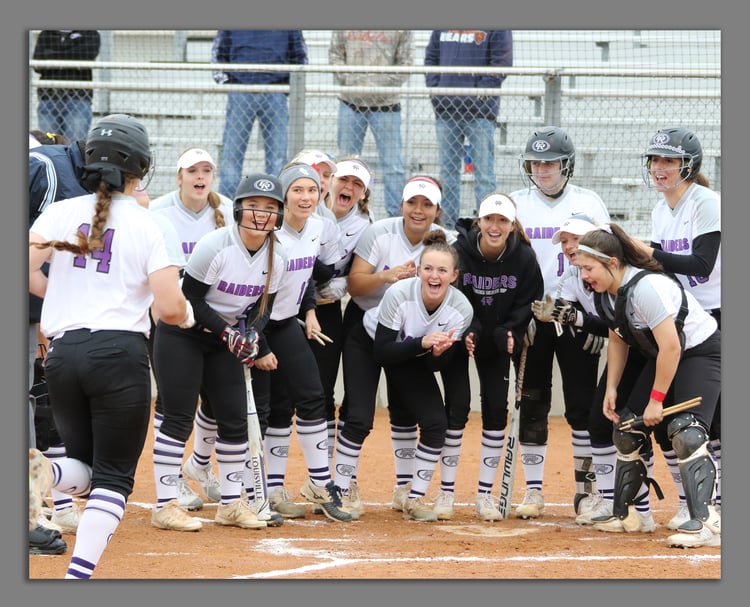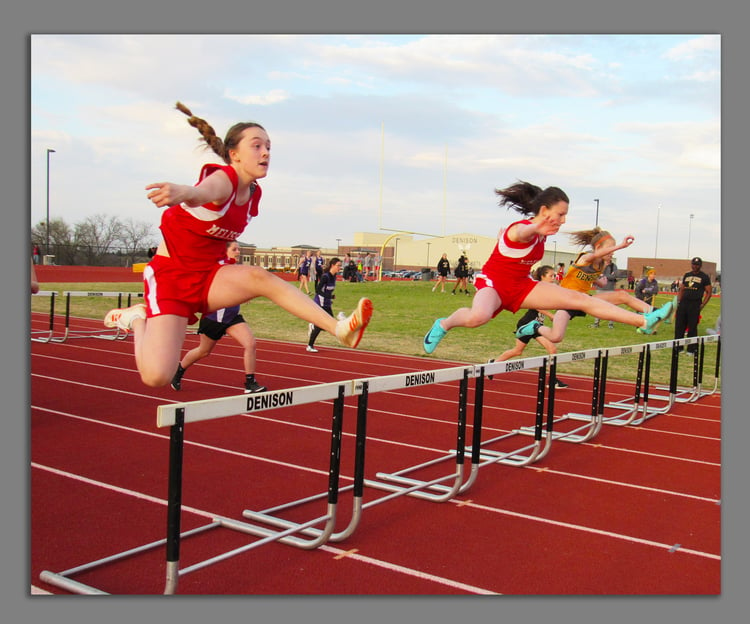
To transition from poorly lit gymnasiums to sunny outdoor venues, turn down your ISO and crank up your shutter speed. Student photographers will often set their cameras in full automatic mode or in a preset labeled “sports” or “action.” While these may work sometimes, it’s best to go semi-manual in aperture priority mode with the lowest f-stop selected, like f2.8 or f4.0.
Think about location. Ask the coaches where you are allowed to go. In shot put and discus, being in the wrong place is a safety hazard. As a matter of fact, the wrong location could spell disaster in most spring sports.
Look for one-person, two-people, three-people, small group and large group moments. By shooting before and after events, you are more likely to get variation in content.

Practices allow you more flexibility in location and expand your opportunities to vary the number of people in the photos.

Plan your shooting location. For example, if you position yourself on the opponent’s side of home plate, you will not only get your batter in the photo, but your dugout too. On most tennis courts, shooting from behind the opponent’s back (with selective focus) provides the best angle for your team’s players. Try to get 25 recognizable faces on a spread.

A few additional tips for your next event —
- If the sport requires a ball, keep it in the shot.
- Shoot the scoreboard periodically to help keep the photos in storytelling order. The end of a race, match or game is usually more intense than the beginning.
- Attend at least three competitions and shoot a minimum of 200 photos per event.
Enjoy the fresh air, wear sunscreen and have fun!

